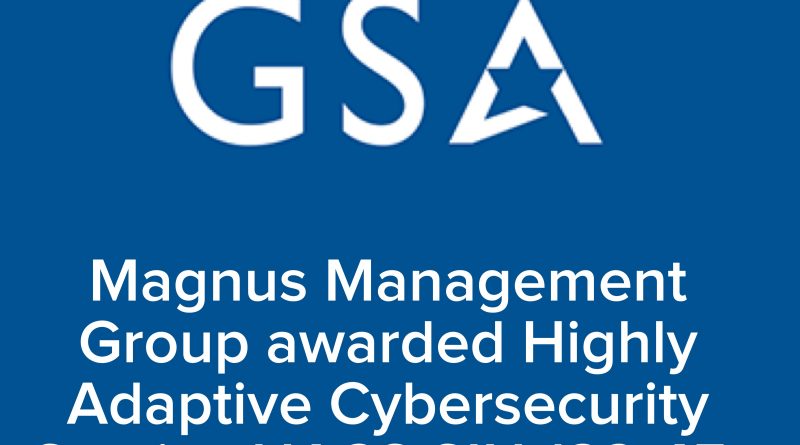Magnus awarded the GSA Highly Adaptive Cybersecurity Services (HACS) SIN 132-45
NXTKey / Magnus proud to announce that GSA has awarded it the Highly Adaptive Cybersecurity Services (HACS) SIN 132-45 along with 48 labor categories to its IT 70 Schedule.
The scope of the HACS SIN includes proactive and reactive cybersecurity services. Assessment services needed for systems categorized as High Value Assets (HVA) are also within scope of this SIN. It includes Risk and Vulnerability Assessments (RVA), Security Architecture Review (SAR), and Systems Security Engineering (SSE). Additionally, the scope of the SIN includes services for the seven step Risk Management Framework (RMF), and Security Operations Center (SOC) services.
There are five subcategories under the HACS SIN 132-45. NXTKey / Magnus has passed a technical evaluation for each specific subcategory:
- High Value Asset Assessments – include Risk and Vulnerability Assessment (RVA) which assesses threats and vulnerabilities, determines deviations from acceptable configurations, enterprise or local policy, assesses the level of risk, and develops and/or recommends appropriate mitigation countermeasures in operational and non-operational situations. See the section below on RVA for details on those services. Security Architecture Review (SAR) evaluates a subset of the agency’s HVA security posture to determine whether the agency has properly architected its cybersecurity solutions and ensures that agency leadership fully understands the risks inherent in the implemented cybersecurity solution. The SAR process utilizes in-person interviews, documentation reviews, and leading practice evaluations of the HVA environment and supporting systems. SAR provides a holistic analysis of how an HVA’s individual security components integrate and operate, including how data is protected during operations. Systems Security Engineering (SSE) identifies security vulnerabilities and minimizes or contains risks associated with these vulnerabilities spanning the Systems Development Life Cycle. SSE focuses on, but is not limited to the following security areas: perimeter security, network security, endpoint security, application security, physical security, and data security.
- Risk and Vulnerability Assessment – assesses threats and vulnerabilities, determines deviations from acceptable configurations, enterprise or local policy, assesses the level of risk, and develops and/or recommends appropriate mitigation countermeasures in operational and non-operational situations. The services offered in the RVA sub-category include Network Mapping, Vulnerability Scanning, Phishing Assessment, Wireless Assessment, Web Application Assessment, Operating System Security Assessment (OSSA), Database Assessment, and Penetration Testing.
- Cyber Hunt – activities respond to crises or urgent situations within the pertinent domain to mitigate immediate and potential threats. Cyber Hunts start with the premise that threat actors known to target some organizations in a specific industry or with specific systems are likely to also target other organizations in the same industry or with the same systems.
- Incident Response – services help organizations impacted by a cybersecurity compromise determine the extent of the incident, remove the adversary from their systems, and restore their networks to a more secure state.
- Penetration Testing – is security testing in which assessors mimic real-world attacks to identify methods for circumventing the security features of an application, system, or network.




